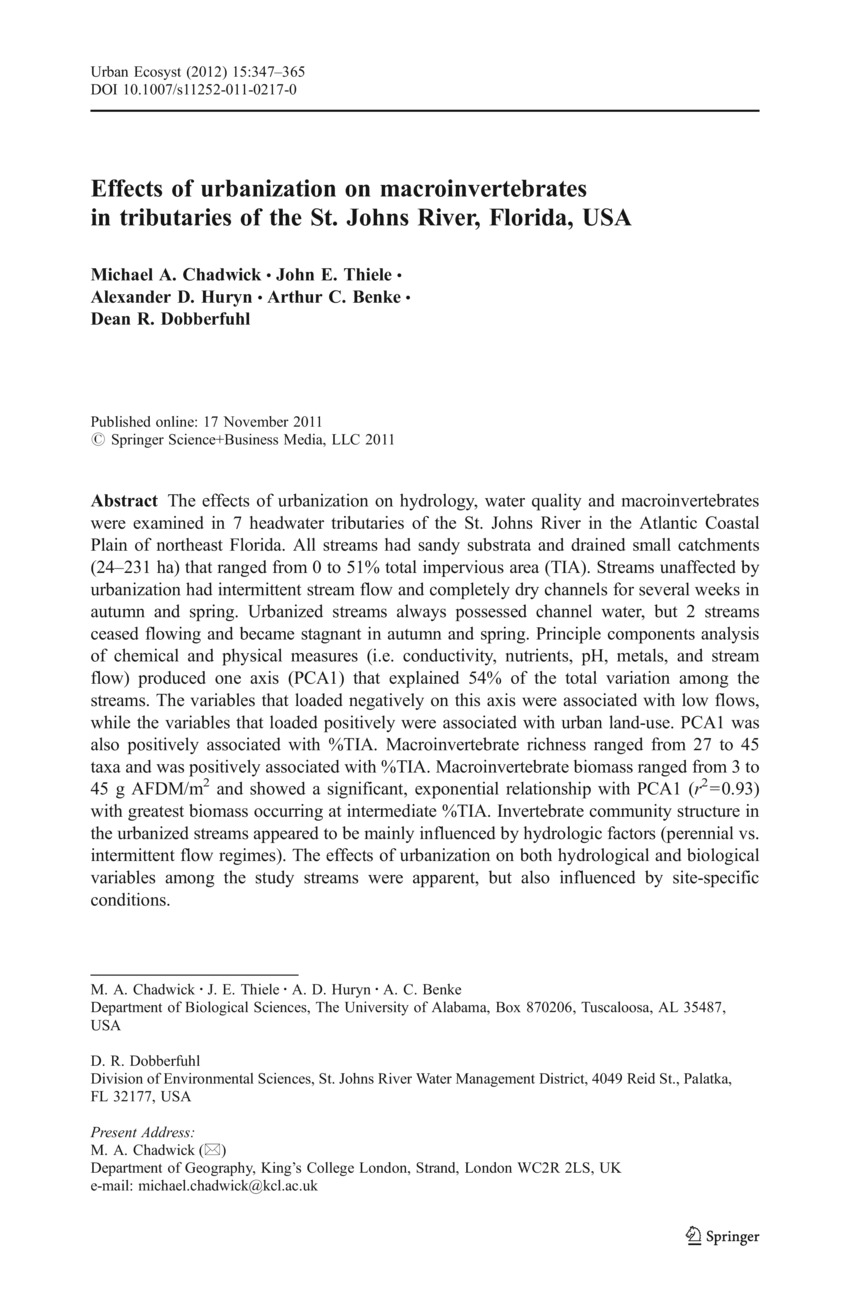Journal Article
AccessEffects of Urbanization on Macroinvertebrates in Tributaries of the St. Johns River, Florida, USA
The effects of urbanization on hydrology, water quality and macroinvertebrates were examined in 7 headwater tributaries of the St. Johns River in the Atlantic Coastal Plain of northeast Florida. All streams had sandy substrata and drained small catchments (24–231 ha) that ranged from 0 to 51% total impervious area (TIA). Streams unaffected by urbanization had intermittent stream flow and completely dry channels for several weeks in autumn and spring. Urbanized streams always possessed channel water, but 2 streams ceased flowing and became stagnant in autumn and spring. Principle components analysis of chemical and physical measures (i.e. conductivity, nutrients, pH, metals, and stream flow) produced one axis (PCA1) that explained 54% of the total variation among the streams. The variables that loaded negatively on this axis were associated with low flows, while the variables that loaded positively were associated with urban land-use. PCA1 was also positively associated with %TIA. Macroinvertebrate richness ranged from 27 to 45 taxa and was positively associated with %TIA. Macroinvertebrate biomass ranged from 3 to 45 g AFDM/m2 and showed a significant, exponential relationship with PCA1 (r 2 = 0.93) with greatest biomass occurring at intermediate %TIA. Invertebrate community structure in the urbanized streams appeared to be mainly influenced by hydrologic factors (perennial vs. intermittent flow regimes). The effects of urbanization on both hydrological and biological variables among the study streams were apparent, but also influenced by site-specific conditions.
Publisher - Springer
Subjects - Macroinvertebrates
Citation: Chadwick MA, Thiele JE, Huryn AD, C. BA, Dobberfuhl DR. 2012. Effects of Urbanization on Macroinvertebrates in Tributaries of the St. Johns River, Florida, USA. Urban Ecosystems; 15(2):347-365 http://dx.doi.org/10.1007/s11252-011-0217-0
